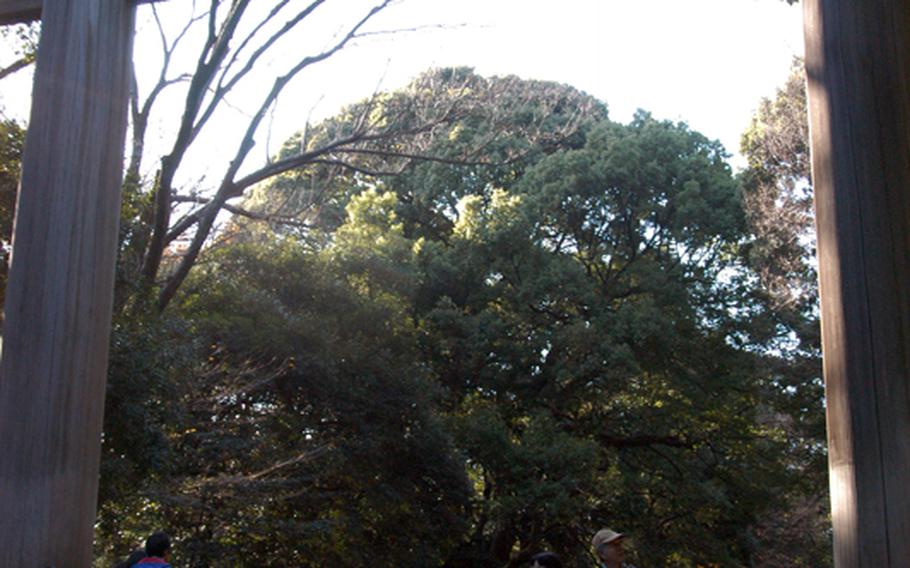
Worshippers at Meiji Jingu in Tokyo walk down the approach to the main shrine through Torii gate. (Hana Kusumoto/Stars and Stripes)
There are many reasons and occasions throughout the year for the average Japanese citizen to visit a shrine, or jinja. One of the most popular times to visit is during the first three days of the new year to pray to the gods of Shinto, Japan’s indigenous religion, for a good and healthy year.
In 2009, about 100 million people visited shrines and temples on the first three days of the year, according to a survey conducted by the National Police Agency. Of those, the most popular place to visit was Meiji Jingu shrine in Tokyo, which attracted about 3.2 million people.
For those who have never been to a shrine, it may be somewhat intimidating since there are certain ways you are supposed to act. But don’t worry because here are some helpful tips that will help make your visit an enjoyable one.
Since shrines are built in various locations, from downtown areas in large cities to mountainsides, they come in different shapes and sizes. However, at most of the locations you will usually find big shrine gates, called torii. These are gateways that are said to separate the human world from the god world. Many people bow before entering the first torii gate to salute and show gratitude to the gods enshrined.
After entering the torii, there is an approach to the honden, or the main shrine, usually marked with stone lanterns. People are expected to walk on the edges of the approach since the center is seen as the place for the gods — although not everyone follows this piece of etiquette.
Before entering the main shrine, worshippers are expected to wash their hands and mouths in a water basin called a temizuya. This is to cleanse their mind and body before entering. Check out First step: Purification to see illustrations of the steps. These are are steps to follow when washing your hands and mouth:
1. Hold the ladle in your right hand.
2. Scoop water from the water basin and pour it over your left hand.
3. Switch hands to hold the ladle in your left hand and scoop water to pour it over the right hand.
4. Hold the ladle in your right hand again and pour water into your left hand to rinse your mouth. Do not put your mouth on the ladle directly.
5. Wash your left hand again.
6. Hold the ladle upright to rinse the handle.
Once you purify yourself, you can enter the haiden, or the altar. There is a way to pray at the altar as well. Check out Second step: Entering the haiden to see illustrations of the steps.
1. Stand before the altar and throw in the saisen, or money offerings, into a box.
2. If there is a bell with a rope hanging down above the money offering box, ring it.
3. Straighten out your posture and bow twice.
4. Put your hands together in front of your chest and clap twice.
5. Pray with your hands together in front of your chest.
6. Bow once more.
After paying a visit, many visitors buy small lucky charms, or omikuji. A person’s fortune in regard to health, financial, business and love life are written on these paper charms. Other buy wooden plaques called Ema to write their wishes and prayers. They are hung at a special place in the shrine for the gods to read them.
If you have never been to a shrine, you’re missing out on an important part of the Japanese culture. So check one out. And if you’re still not sure what to do, just follow what others are doing.
For more information on Shinto and shrines, go to The Association of Shinto Shrines website at www.jinjahoncho.or.jp/en/ .